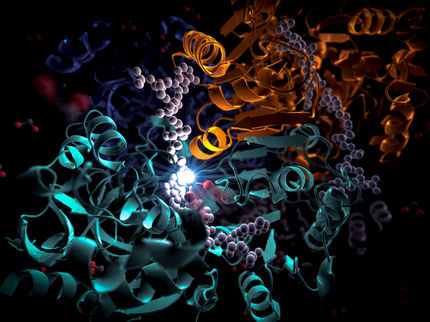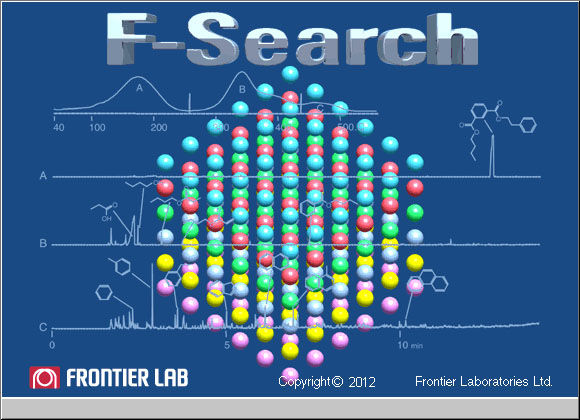Earth's history to be rewritten
Until now, science has believed that oxygen in the Earth's atmosphere has been around for roughly 2.3 billion years, or roughly half way back along our planet's 4.6 billion year timeline. However, new research results provide evidence that the dating of a so-called “Great Oxygenation Event” needs a 700- million-year backwards recalibration. The dramatic results come from a project involving researchers from the University of Copenhagen (UCPH), the Nordic Center for Earth Evolution (nordCEE), the University of Southern Denmark and several other universities globally. The incredible discovery suggests that the history of life on Earth now includes a previously unrecognised chapter. The results are now published in the renowned scientific journal, Nature.

Three billion years ago there was already lots of oxygen in the atmosphere.
University of Copenhagen
It's been nearly 15 years since Professor Minik Rosing of the University of Copenhagen asserted that terrestrial life began with primitive bacteria living in Precambrian oceans some 3.8 billion years ago.
However, these microscopic organisms were in no way able to produce the amounts of oxygen necessary to alter the Earth's atmospheric composition and thus form the basis of life as we know it. Millions upon millions of more years were needed to advance to this stage.
Planet's oldest soil
The new and dramatic aspect of the Earth's history is based upon the analysis of ancient rock samples collected from 1000 metres beneath South Africa. The new chapter has been investigated, analysed and now co-written by among others, Postdoc Lasse Nørbye Døssing, of the University of Copenhagen's Department of Geosciences and Natural Resource Management.
Døssing and his colleagues have extended the 2.3 billion years that it was thought since large amounts of oxygen appeared in the atmosphere by an additional 700 million years. His project colleagues come from universities in Denmark and from around the world, including: the Nordic Center for Earth Evolution (NordCEE) in Odense, Denmark; The University of Southern Denmark; the University of Johannesburg, South Africa; Jacobs University in Bremen, Germany; and the University of British Columbia, Canada.
Døssing's colleague Sean Crowe from the University of British Columbia states:
“Our investigations indicate that bacteria were able produce large amounts of oxygen three billion-years-ago and thereby create the foundation for one of the most important chemical processes on earth – photosynthesis. Microscopic bacteria's ability to allow trees and other plant life to take in CO2 and produce oxygen in return, for example. This was the beginning of a long and complicated process that brings us to today, a point in time when nearly 20 percent of the earth's atmosphere is composed of oxygen and the rest, nearly all nitrogen. These bacteria are the reason that we as humans, as well as other beings, have been able to breath and thus populate the planet.
The big question
Besides being of interest in relation to atmospheric chemistry, the results are of great significance for evolutionary history. And that includes the evolution of humans from primitive beings to top creatures in the animal kingdom.
Lasse Nørbye Dossing:
“As a geologist, I'll leave it to the evolutionary biologists and philosophers to answer the question of where humans, as a species, would be today if we didn't have the extra 700 million years of sufficient oxygen in the atmosphere. But it is thought-provoking that our research results have provided evolutionary history with a new and not entirely insignificant chapter.”
One who is prepared to comment on the gripping research is Professor Eske Willerslev, a DNA researcher and evolutionary biologist at the University of Copenhagen famous for his genetic mapping of extinct species and prehistoric humans.
“These are incredibly interesting results that Døssing and the other researchers have reached. The results point to the fact that forms of terrestrial life dependent upon oxygen have taken longer to evolve than we had previously thought. Conversely, it could also suggest that this type of life has been around for longer than believed. Whatever the case, this new research will prompt researchers to look for life further back than we had previously believed possible”, stresses Professor Willerslev.
Other news from the department science
Most read news
More news from our other portals
See the theme worlds for related content
Topic world Synthesis
Chemical synthesis is at the heart of modern chemistry and enables the targeted production of molecules with specific properties. By combining starting materials in defined reaction conditions, chemists can create a wide range of compounds, from simple molecules to complex active ingredients.

Topic world Synthesis
Chemical synthesis is at the heart of modern chemistry and enables the targeted production of molecules with specific properties. By combining starting materials in defined reaction conditions, chemists can create a wide range of compounds, from simple molecules to complex active ingredients.






























































